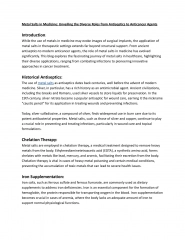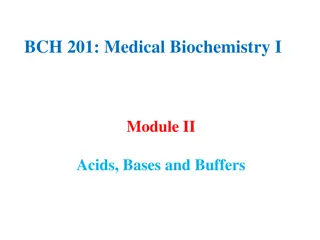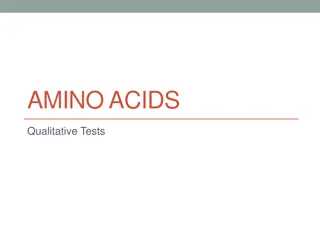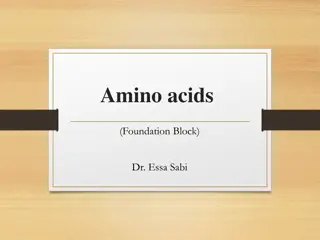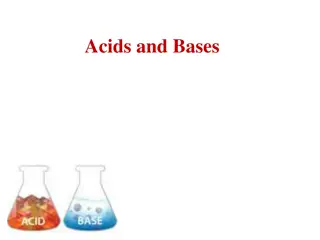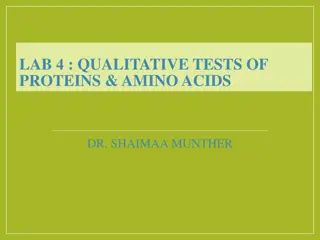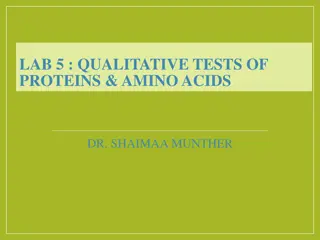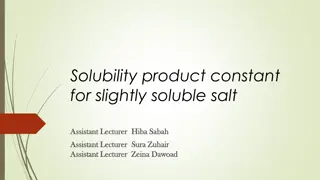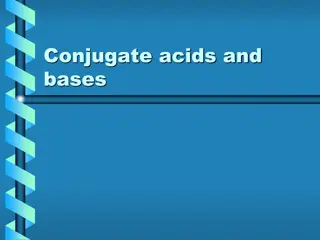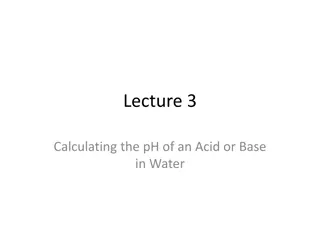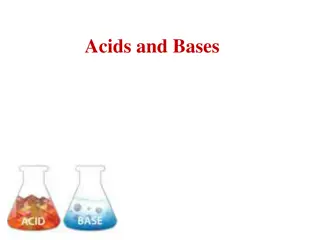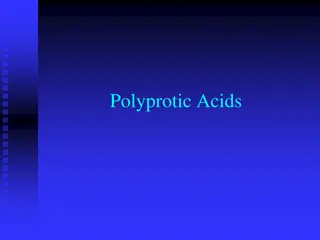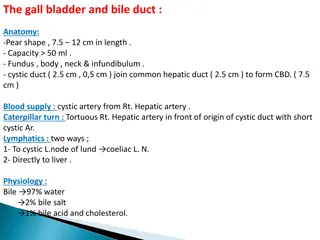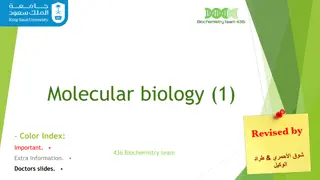
Biochemical Aspects of Bile Acids and Salts in Metabolism
Explore the biochemical aspects of bile acids and salts, including their structures, functions, synthesis, and hormonal control in metabolism. Understand the significance of primary and secondary bile acids, hepatic synthesis, and the role of bile salts in digestion. Discover how cholesterol serves as the precursor for bile acid production and the impact of bile acid imbalance on conditions like cholelithiasis.
Download Presentation

Please find below an Image/Link to download the presentation.
The content on the website is provided AS IS for your information and personal use only. It may not be sold, licensed, or shared on other websites without obtaining consent from the author. If you encounter any issues during the download, it is possible that the publisher has removed the file from their server.
You are allowed to download the files provided on this website for personal or commercial use, subject to the condition that they are used lawfully. All files are the property of their respective owners.
The content on the website is provided AS IS for your information and personal use only. It may not be sold, licensed, or shared on other websites without obtaining consent from the author.
E N D
Presentation Transcript
Biochemical Aspects Biochemical Aspects of Bile Acids and Salts of Bile Acids and Salts By Amr S. Moustafa, M.D.; Ph.D. Amr S. Moustafa, M.D.; Ph.D.
Objectives Objectives Structure of primary bile acids and salts Structure of secondary bile acids and salts Functions of bile salts Enterohepatic circulation Malabsorption syndrome Cholelithiasis
Cholesterol Cholesterol Cholesterol (27 C) is the: Parent steroid compound Precursor of bile acids and salts
Primary Bile Acids Primary Bile Acids Primary bile acids (24 C): Amphipathic -COOH at side chain Cholic acid: 3 OH Chenodeoxycholic: 2 OH
Hepatic Synthesis of Bile Acids Hepatic Synthesis of Bile Acids The rate-limiting step is catalyzed by: Cholesterol 7- -hydroxylase Regulation: Down-regulated by end products (bile acids) Enzyme repression Up-regulated by cholesterol Enzyme induction
Primary Bile Acids and Salts Primary Bile Acids and Salts Chenodeoxycholic acid Cholic acid BILE ACIDS Glycochenodeoxycholic Taurochenodeoxycholic Glycocholic Taurocholic BILE SALTS Bile salts (Conjugated bile acids): amide-linked with glycine or taurine The ratio of glycine to taurine forms in the bile is 3:1
Bile Salts Bile Salts Addition of glycine or taurine results in the presence of fully ionized groups at pH 7.0: -COOH of glycine & -SO3 of taurine (hence, its name as bile salts e.g., Sodium or potassium glycocholate) More effective detergent than bile acids Only bile salts, but not acids, found in bile
Bile Salts Na or K Glycocholate 3 Na or K Taurochenodeoxycholate
Hormonal Control of Bile Secretion Stimulus: Undigested lipids and partially digested proteins in duodenum Hormone from gut cells: Cholecystokinin (CCK) Responses: 1. Secretion of pancreatic enzymes 2. Bile secretion 3. Slow release of gastric contents
Functions of Bile Salts Functions of Bile Salts Important for cholesterol excretion: 1. As metabolic products of cholesterol 2. Solubilizer of cholesterol in bile Emulsifying factors for dietary lipids, a prerequisite step for efficient lipid digestion Cofactor for pancreatic lipase and PLA2 Facilitate intestinal lipid absorption by formation of mixed micelle
Emulsification of Dietary Lipids in Duodenum: Role of Bile Salts Emulsification increases the surface area of lipid droplets, therefore the digestive enzymes can effectively act. Mechanisms: 1. Mechanical mixing by peristalsis 2. Detergent effect of bile salts: Bile salts interact with lipid particles and aqueous duodenal contents, stabilizing the particles as they become smaller, and preventing them from coalescing.
Absorption of Lipids by Intestinal Absorption of Lipids by Intestinal Mucosal Cells: Role of Bile salts Mucosal Cells: Role of Bile salts Mixed micelles: Disc-shaped clusters of amphipathic lipids. Arranged with their hydrophobic groups on the inside and their hydrophilic groups on the outside. Micelle includes end products of lipid digestion, bile salts and fat-soluble vitamins Note: Short- and medium-chain fatty acids do not require mixed micelle for absorption by intestinal cells
The Role of Bile Salts The Role of Bile Salts in Absorption of Lipids in Absorption of Lipids by Intestinal Cells by Intestinal Cells Mixed Micelle Formation: Bile salts End products of lipid digestion Fat-soluble vitamins
Secondary Bile Acids Secondary Bile Acids Bile salts Glyco- or Tauro-cholate -Chenodeoxycholate Glycine Taurine Intestinal bacteria Bile acids Cholic acid Chenodeoxycholic Intestinal bacteria OH 2 Bile acids Deoxycholic acid Lithocholic
Enterohepatic Circulation Enterohepatic Circulation
Enterohepatic Circulation Enterohepatic Circulation CONT D Cholestyramine: Bile acid sequestrants It binds to bile acids in the gut, preventing their reabsorption & Promoting their excretion It is used for treatment of hypercholesterolemia Dietary fiber: It binds to bile acids, increasing their excretion
Maldigestion Maldigestion/ /Malabsorption Malabsorption of Lipids of Lipids Decreased bile secretion by: Liver diseases: e.g., Hepatitis or cirrhosis Gall bladder diseases: e.g., Gall stones Malabsorption of lipids
Cholelithiasis Cholelithiasis Cholesterol Gallstone Disease Cholesterol Gallstone Disease Causes: Bile salts in bile: Biliary tract obstruction (intereferes with enterohepatic circulation) Hepatic dysfunction ( synthesis) Biliary cholesterol excretion Treatment: Bile acid replacement therapy Surgical

